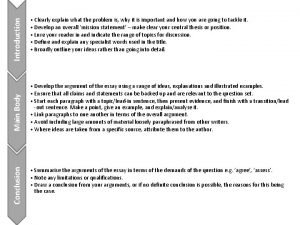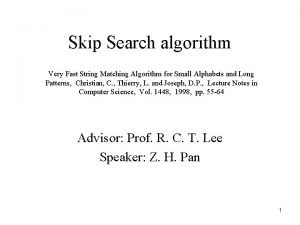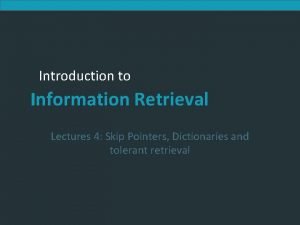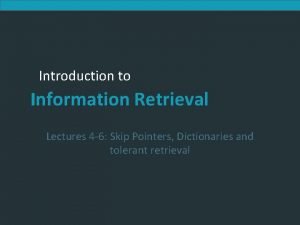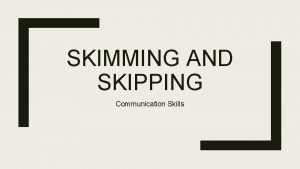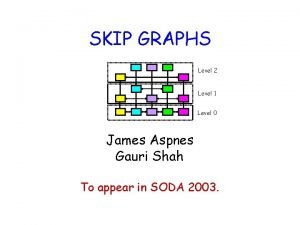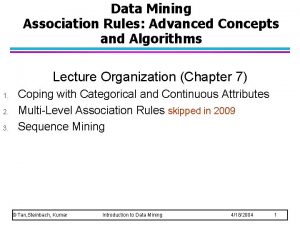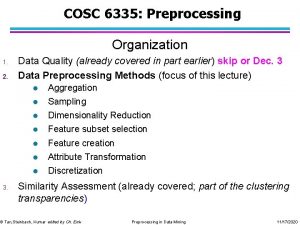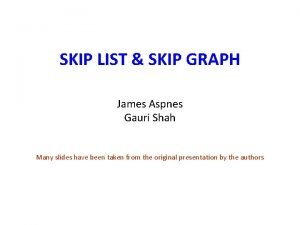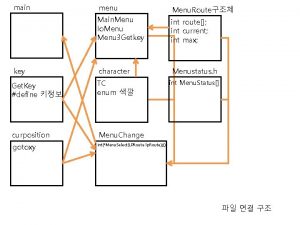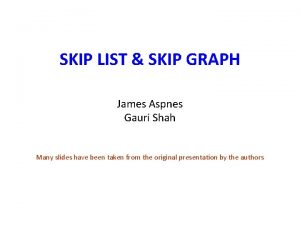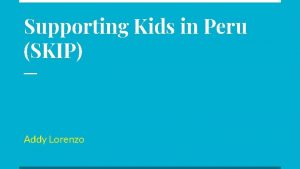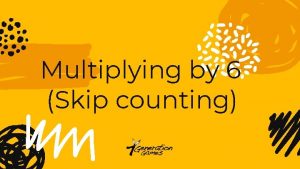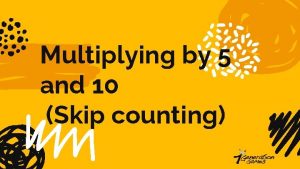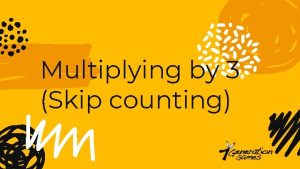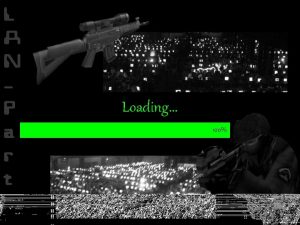Skip Intro Main Menu MAIN MENU History Characteristics



























- Slides: 27


Skip Intro

Main Menu

MAIN MENU History Characteristics Genres Awards Exit Site Map

Turn of the 20 th Century 1940 s to 1966 Unofficial Beginning The Golden Ages Exit Main Menu Site Map

Turn of the th 20 Century The first recognition of young adults as a distinct group was by Sarah Trimmer, who in 1802 described "young adulthood" as lasting from ages 14 to 21. In her self-founded children's literature periodical, The Guardian of Education, Trimmer introduced the terms "Books for Children" (for those under fourteen) and "Books for Young Persons" (for those between fourteen and twenty-one) establishing terms of reference for young adult literature that remain in use today. However, nineteenth-century publishers did not specifically market to young readers, and adolescent culture did not exist in a modern sense. Early 1900’s – 1930’s Series Books • 1905 Edward Stratemeyer Syndicate founded. It produced the following series and others: • Tom Swift • The Hardy Boys • Nancy Drew (110 titles) • Bobbsey Twins • 1922 John Newbery Medal established to honor the “Most distinguished contribution to American literature for children” • 1936 Helen Boylston’s Sue Barton, Student Nurse • With its publication, Margaret Edwards said, “the dawn of the modern teen-age story came up like thunder”. • 1938 John R. Tunis’ The Iron Duke • called the “first sports novel that could legitimately be called ‘literary’ fiction”. Exit Main Menu Site Map

The 1940 s to 1966 1940’s Teen Romance • 1940 Betsy-Tacy Series (13 books) by Maud Hart Lovelace • 1942 Maureen Daly’s Seventeenth Summer • called the first young adult novel by Margaret A. Edwards (“the patron saint of young adult librarians”), even though it was published for adults. • dealt with sexuality and teen romance. • remained popular well into the 1960’s. • still in-print today. 1950’s The Teen Identity • 1952 J. D. Salinger’s Catcher in the Rye • “introduced the contemporary themes of adolescent angst, alienation, and anomie that would inform so much of the teenage fiction that followed in its influential wake”. • 1957 Young Adult Services Division of ALA established 1960’s Rise of Realism • • 1960 To Kill a Mockingbird by Harper Lee 1965 “The All White World of Children’s Books” published by Nancy Larrick • exposed/examined the lack of “authentic” multicultural books for children. Exit Main Menu Site Map

The Unofficial Beginning of YA Lit The modern classification of young-adult fiction originated during the 1950 s and 1960 s, especially after the publication of S. E. Hinton's The Outsiders. This book focused on a group of teens not yet represented and instead of having the nostalgic tone that was typical in young adult books written by adults, it displayed a truer, darker side of young adult life because it was written by a young adult. As publishers began to focus on the emerging adolescent market, booksellers and libraries, in turn, began creating YA sections distinct from either children's literature or novels written for adults. 1967 THE YEAR THAT YA UNOFFICIALLY BEGAN • G. Robert Carlsen’s Books and the Teenage Reader: A Guide for Teachers, Librarians, and Parents • Ann Head’s Mr. and Mrs. Bo Jo Jones • S. E. Hinton’s The Outsiders & Robert Lipsyte’s The Contender • The Outsiders and The Contender “have come to define the form that we think of today as ‘young adult literature’” (Cart). • 1968 Paul Zindel’s The Pigman • 1969 John Donovan’s I’ll Get There. It Better Be Worth the Trip • first YA book to deal with homosexuality. Exit Main Menu Site Map

1970’s Realism & Golden Age of Young Adult Literature • 1971 Go Ask Alice by Anonymous • 1974 Robert Cormier’s The Chocolate War • “perhaps the most controversial and discussed YA novel of the century”. • 1975 Judy Blume’s Forever • 1976 Mildred D. Taylor’s Roll of Thunder, Hear My Cry • one of the first YA books by a writer of color • 1977 Shelton Root coined the term “New Realism”. • described books that dealt with the harsh realities, moral dilemmas, and problems faced by teenagers. • teens became a “distinct social group—not just extensions of their parents”. 1980’s Return to Romance & Series Books • 1987 Young Adult Choices Award established • 1988 Margaret A. Edwards Award established • 1989 Francesca Lia Block’s Weetzie Bat • introduced magical realism to YA lit 1990’s – 21 st Century Return to Realism & Second Golden Age of YA Literature • 1992 Young Adult Services Division of ALA becomes Young Adult Library Services Association • 1996 Pura Belpre Award established • 2000 Printz Award established • awards YA novels purely on the basis of literary merit Exit Main Menu

CHARACTERISTICS Young adult literature contains specific characteristics that are present throughout the genre. These characteristics encompass: “multi-themed story, tension versus shock effect, memorable characters, accurate facts and details, no unlikely coincidences, original idea, memorable voice, authentic dialogue, effective/clear writing style, sense of humor, widespread appeal, intriguing openings and memorable closings”. Other characteristics of Young Adult Literature include: "(1) characters and issues young readers can identify with; those issues and characters are treated in a way that does not invalidate, minimize, or devalue them; (2) is framed in language that young readers can understand; (3) emphasizes plot above everything else; and (4) is written for an audience of young adults". Overall, Young Adult Literature needs to contain specific elements that will not only interest adolescent readers, but elements that relate directly to real situations adolescents face, and contain believable, empathetic characters. Exit Main Menu Site Map

Realistic Fiction Historical Fiction Science Fiction Mystery Fantasy Exit Main Menu Site Map

Realistic Fiction Setting: Story is situated in the real world during the time when the story is written. Characters: Real People/ Humans Only people can talk Major Characters are teenagers Plot: Events that happen in the book could happen in the real world Conflict is a problem that teenagers face Themes: Often deal with issues or themes teenagers struggle with (Ex. Finding one’s identity, dealing with abuse, etc) YA Examples: • Sarah Dessen: Lock and Key, Dreamland, Just Listen • Mike Lupica: Heat, Summerball • Sharon Draper: Tears of a Tiger, Forged by Fire • Walter Dean Myer: Monster Exit Main Menu Site Map

Science Fiction Setting • Story usually takes place in the future, in space, on a different world, or in a different universe or dimension • Story may be set during present day but in a different world than ours Characters • Human characters • Feature characters that have been altered using technology • Characters from other planets Plot • Conflict explores moral, social, or other intellectual issues or questions within our culture. • Events and objects can be explained using laws of science or advances in technology. Themes: • Science fiction may make predictions about life in the future. • Comments on important issues in society. YA Examples: • Lois Lowry: The Giver • James Patterson: Maximum Ride: The Angel Experiment • Rodman Philbrick: The Last Book in the Universe Exit Main Menu Site Map

Fantasy Setting: • May be in set in the our world, in a world similar to our world that has magical or mythological beings, or in a created world. • May be set in the present or past Characters: • Mixture of Human and fantasy creatures like vampires, witches, ghosts, werewolves, fairies, superheroes, or any being that possess abilities beyond that of a human. Plot • Conflict usually revolves around a battle of good versus evil • Battle is fought using magic or superpowers. Theme: • Good triumphs over evil YA Examples: • Cassandra Clare: City of Bones, Clockwork Angel • Rick Riordan: The Lightening Thief • Maggie Stiefvater: Wolves of Mercy Falls Exit Main Menu Site Map

Margaret A. Edwards Awards The Margaret A. Edwards Award, established in 1988, honors an author, as well as a specific body of his or her work, for significant and lasting contribution to young adult literature. The annual award is administered by YALSA and sponsored by School Library Journal magazine. It recognizes an author's work in helping adolescents become aware of themselves and addressing questions about their role and importance in relationships, society, and in the world. 2011 Winner Sir Terry Prachett is the recipient of the 2011 Margaret A. Edwards Award, honoring his significant and lasting contribution to writing for teens for the following nine titles Exit Main Menu Site Map

The Michael L. Printz Award is an award for a book that exemplifies literary excellence in young adult literature. It is named for a Topeka, Kansas school librarian who was a long-time active member of the Young Adult Library Services Association. The award is sponsored by Booklist, a publication of the American Library Association. 2011 Printz Winner Ship Breaker by Paolo Bacigalupi In Ship Breaker, near a drowned New Orleans ravaged by hurricanes and global warming, Nailer and his young crew eke out a meager existence by scavenging materials on the ship -littered coast. “This taut, suspenseful novel is a relentless adventure story featuring nuanced characters in thought-provoking conflicts. Bacigalupi artfully intertwines themes of loyalty, family, friendship, trust and love, ” said Printz Award Committee Chair Erin Downey Howerton. Exit Main Menu Site Map

Coretta Scott King Award The Coretta Scott King Award is given to African American authors and illustrator for outstanding inspirational and educational contributions, the Coretta Scott King Book Award titles promote understanding and appreciation of the culture of all peoples and their contribution to the realization of the American dream of a pluralistic society. The award is designed to commemorate the life and works of Dr. Martin Luther King Jr. and to honor Mrs. Coretta Scott King for her courage and determination to continue the work for peace and world brotherhood. 2011 Author Award Winner “One Crazy Summer, ” written by Rita Williams-Garcia and published by Amistad, an imprint of Harper. Collins Publishers, tells the story of 11 -year-old Delphine and her two younger sisters as they travel to Oakland, Calif. in 1968 to face the emotional challenge of reaching out to a distant mother and learn about a different side of the Civil Rights Movement. Themes of friendship, family and identity intertwine with broader social issues in this compelling historical novel. Exit Main Menu Site Map

Links to Book Lists for Young Adult Literature • • • 2011 Best Fiction for Young Adults Top Ten Best Fiction for Young Adult Fiction Amazing Audio Books 2011 Great Graphic Novels for Teens Ouststanding Books for the College Bound Exit Main Menu Site Map

Young Adult Awards Margaret A. Edwards Award Michael L. Printz Award Coretta Scott King Award 2011 Best YA Booklist Exit Main Menu Site Map

Exit Main Menu Young Adult Literature Intro 1 Intro 2 Menu Genres History Turn of the Century Golden Years 1940 s to 1960 s Unofficial Beginning Characteristics Realistic Fiction Science Fiction Mystery (inactive) Historical Fiction (inactive) Fantasy (Submenu) Rick Riordan (incative) Maggie Stiefvater Cassandr a Clare Awards Margaret A. Edwards Coretta Scott King Michael L. Printz 2011 YA Booklists (external Links)

Cassandra Clare was born to American parents in Teheran, Iran and spent much of her childhood travelling the world with her family, including one trek through the Himalayas as a toddler where she spent a month living in her father’s backpack. She lived in France, England Switzerland before she was ten years old. Since her family moved around so much she found familiarity in books and went everywhere with a book under her arm. She spent her high school years in Los Angeles where she used to write stories to amuse her classmates, including an epic novel called “The Beautiful Cassandra” based on a Jane Austen short story of the same name (and which later inspired her current pen name). After college, Cassie lived in Los Angeles and New York where she worked at various entertainment magazines and even some rather suspect tabloids where she reported on Brad and Angelina’s world travels and Britney Spears’ wardrobe malfunctions. She started working on her YA novel, City of Bones, in 2004, inspired by the urban landscape of Manhattan, her favorite city. She turned to writing fantasy fiction full time in 2006 and hopes never to have to write about Paris Hilton again. Cassie’s first professional writing sale was a short story called “The Girl’s Guide to Defeating the Dark Lord” in a Baen anthology of humor fantasy. Cassie hates working at home alone because she always gets distracted by reality TV shows and the antics of her two cats, so she usually sets out to write in local coffee shops and restaurants. She likes to work in the company of her friends, who see that she sticks to her deadlines. City of Bones was her first novel. Exit Fantasy Main Menu Site Map

Mortal Instrument Series City of Bones: When fifteen-year-old Clary Fray heads out to the Pandemonium Club in New York City, she hardly expects to witness a murder — much less a murder committed by three teenagers covered with strange tattoos and brandishing bizarre weapons. Clary knows she should call the police, but it's hard to explain a murder when the body disappears into thin air and the murderers are invisible to everyone but Clary. Equally startled by her ability to see them, the murderers explain themselves as Shadowhunters: a secret tribe of warriors dedicated to ridding the earth of demons. Within twenty-four hours, Clary's mother disappears and Clary herself is almost killed by a grotesque demon. But why would demons be interested in ordinary mundanes like Clary and her mother? And how did Clary suddenly get the Sight? The Shadowhunters would like to know. . Exit Fantasy Main Menu Site Map

Infernal Devices Clockwork Angel: Magic is dangerous—but love is more dangerous still. When sixteen-year-old Tessa Gray crosses the ocean to find her brother, her destination is England, the time is the reign of Queen Victoria, and something terrifying is waiting for her in London's Downworld, where vampires, warlocks and other supernatural folk stalk the gaslit streets. Only the Shadowhunters, warriors dedicated to ridding the world of demons, keep order. Kidnapped amidst theby chaos. the mysterious Dark Sisters, members of a secret organization called The Pandemonium Club, Tessa soon learns that she herself is a Downworlder with a rare ability: the power to transform, at will, into another person. What's more, the Magister, the shadowy figure who runs the Club, will stop at nothing to claim Tessa's power for his own. Friendless and hunted, Tessa takes refuge with the Shadowhunters of the London Institute, who swear to find her brother if she will use her power to help them. She soon finds herself fascinated by—and torn between—two best friends: James, whose fragile beauty hides a deadly secret, and blue-eyed Will, whose caustic wit and volatile moods keep everyone in his life at arm's length. . . everyone, that is, but Tessa. As their search draws them deep into the heart of an arcane plot that threatens to destroy the Shadowhunters, Tessa realizes that she may need to choose between saving her brother and helping her new friends save the world. . . and that love may be the most dangerous magic of all. Exit Fantasy Main Menu Site Map

Cassandra Clare Maggie Stiefvater Rick Riordan Exit Main Menu Site Map

MAGGIE STIEFVATER All of Maggie’s life decisions have been based around her inability to be gainfully employed. Talking to oneself, staring into space, and coming to work in your pajamas are frowned upon when you're a waitress, calligraphy instructor, or technical editor (all of which she has tried), but are highly prized traits in novelists, musicians, and artists (She has made herliving as one of these since she was 22). Maggie now lives an eccentric life in the middle of nowhere, Virginia, with her charmingly straight-laced husband, two small kids, two neurotic dogs, one criminally insane cat, and a 1973 Camaro named Loki. She is an avid reader, an award-winning colored pencil artist, and plays several musical instruments, including the Celtic harp, the piano, and the bagpipes. She also makes great cocktail party conversation. Exit Fantasy Main Menu Site Map

Wolves of Mercy Falls Series Grace, 17, loves the peace and tranquility of the woods behind her home. It is here during the cold winter months that she gets to see her wolf—the one with the yellow eyes. Grace is sure that he saved her from an attack by other wolves when she was nine. Meanwhile, Sam has lived two lives: In winter, the frozen woods, the protection of the pack, and the silent company of a fearless girl. In summer, a few precious months of being human. . . until the cold makes him shift back again. Over the ensuing years he has returned each season, watching her with those haunting eyes as if longing for something to happen. When a teen is killed by wolves, a hunting party decides to retaliate. Graces through the woods and discovers a wounded boy shivering on her back porch. One look at his yellow eyes and she knows that this is her wolf in human form. Fate has finally brought Sam and Grace together, and as their love grows and intensifies, so does the reality of what awaits them. It is only a matter of time before the winter cold changes him back into a wolf, and this time he might stay that way forever. Exit Fantasy Main Menu Site Map

Book of Faerie Sixteen-year-old Deirdre Monaghan is a painfully shy but prodigiously gifted musician. She's about to find out she's also a Cloverhand—one who can see faeries. When a mysterious boy enters her ordinary suburban life, seemingly out of nowhere, Deirdre finds herself infatuated. Trouble is, the enigmatic and conflicted Luke turns out to be a gallowglass—a soulless faerie assassin —and Deirdre is meant to be his next mark. Deirdre has to decide if Luke's feelings towards her are real, or only a way to lure her deeper into the world of Faerie. Exit Fantasy Main Menu Site Map
 Skip pointer information retrieval
Skip pointer information retrieval Body conclusion
Body conclusion Skip rochefort
Skip rochefort Skip rochefort
Skip rochefort Skip tracing definition
Skip tracing definition Skip search algorithm
Skip search algorithm Louise skip counts by 4 on a number line
Louise skip counts by 4 on a number line In recent years evidence has been collected
In recent years evidence has been collected Randomized skip list
Randomized skip list Which is a good idea for using skip pointers?
Which is a good idea for using skip pointers? Which is a good idea for using skip pointers
Which is a good idea for using skip pointers Skip list python
Skip list python טבלת גיבוב
טבלת גיבוב Skip list
Skip list What is skimming skill
What is skimming skill Skip swanson
Skip swanson Pant i skip
Pant i skip Skip graph
Skip graph Skip the games
Skip the games Uk
Uk Association analysis advanced concepts
Association analysis advanced concepts Mining skip
Mining skip Skip through the seasons
Skip through the seasons Skip graph
Skip graph Skipdraw
Skipdraw Skip pointers
Skip pointers Dr dalton benson
Dr dalton benson Project scoping
Project scoping

